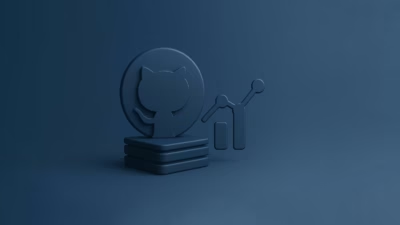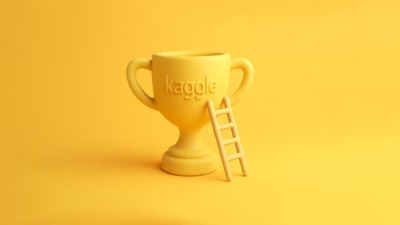You know that gnawing feeling? The one where you’ve spent months learning Python, pandas, and machine learning… but when someone says, “Show me what you’ve built,” you freeze like a laptop during a Zoom call?
Yeah. Welcome to the club.
Here’s the truth no one tells you early enough: you don’t get hired in data science because you “know” stuff — you get hired because you show stuff.
Your portfolio isn’t just a nice-to-have. It’s the thing. It’s your proof, your handshake, your pitch — all rolled into one.
So if you’re ready to build a portfolio that doesn’t just sit there looking pretty but actually makes recruiters and hiring managers lean in and say, “Tell me more”— grab your coffee. Let’s get into it.
Why Most Data Science Portfolios Are Snoozefests (And How to Avoid It)
Let me be blunt: 80% of beginner portfolios are, well, boring.
They’re the same five Kaggle competitions. The same Titanic dataset (“Can we predict survival?”). The same house prices in Ames, Iowa.
Here’s the kicker: It’s not that those projects are bad. They’re classics for a reason.
But if you want to stand out, you have to do two things:
(1) Personalize. Make it clear why you chose the project and what story you’re telling.
(2) Push further. Go beyond what’s asked. Add a unique angle or insight.
Example?
Instead of “Predict Titanic survivors,” imagine:
“Can we predict which families were more likely to survive together, and how social bonds affected survival?”
Suddenly, it’s not a checkbox project — it’s your project.
👉 Quick Tip:
Before starting any portfolio project, ask yourself: Would this make someone say, “Huh, that’s interesting”?
If not, tweak it until it does.
What Should Actually Go Into Your Portfolio? (Not What You Think)
You don’t need 10 projects.
You need 3–4 solid ones that show breadth, depth, and a spark of creativity.
Here’s a mix that works ridiculously well:
- One EDA-heavy project (Exploratory Data Analysis) where you dig deep, visualize like a champ, and tell a story.
- One predictive modeling project — linear models, trees, ensembles, whatever fits.
- One end-to-end project — scraping data, cleaning it, building a model, and deploying it (even if it’s just a simple Flask app!).
- (Optional bonus): A niche passion project. Something weirdly specific you love.
Personal story moment:
When I built my first portfolio, I panicked and threw six half-baked projects online. Not one got noticed. Later, I stripped it down to just three — but polished the heck out of them. That’s when interviewers finally started asking me about my work.
👉 Quick Tip:
Focus beats volume. Three memorable projects > ten forgettable ones.
Picking the Right Projects: Stop Waiting for “Perfect” Ideas
Oh man, the number of hours I wasted waiting for the “perfect” dataset…
(If I had a dollar for every abandoned Kaggle search session, I could’ve bought a lifetime supply of caffeine.)
Reality check:
You don’t need a perfect idea. You just need an idea you care about enough to finish.
Look around your life:
- Love sports? Analyze player stats.
- Obsessed with skincare? Scrape product reviews.
- Into fitness? Predict personal bests from workout logs.
- Big on local politics? Track voting patterns.
Data is everywhere.
Your projects should feel less like homework and more like curiosity unleashed.
👉 Quick Tip:
Build what you’re genuinely curious about. Passion beats polish when you’re starting out.
How to Present Your Work So It Doesn’t Just Sit There
Here’s the brutal truth:
A great project no one can understand is the same as no project at all.
You need to package your work beautifully. (No, I don’t mean fancy graphics. I mean clarity.)
Every project should include:
- A clear problem statement (“What question am I trying to answer?”)
- A quick overview (“Here’s the data. Here’s what I did. Here’s what I found.”)
- Clean visuals (charts > walls of text)
- A reflection (“What worked? What didn’t? What would I try next?”)
And yes, use a Jupyter Notebook plus a clean README on GitHub.
One of my best “aha!” moments?
Realizing hiring managers often scan the README before looking at any code.
If your README tells the story cleanly, they’ll dive deeper. If not… well, they’re busy people.
👉 Quick Tip:
Write your README like you’re explaining your project to a curious friend, not a robot.
Where to Showcase It (And Why “Just GitHub” Isn’t Enough)
GitHub is home base, for sure.
But you can go further. Here’s where the real players hang out:
- Medium or a personal blog: Write a post summarizing your project. Writing = thinking = massive bonus points.
- LinkedIn: Share posts with insights or lessons you learned during your projects.
- Portfolio Website: Even a super basic one shows you’re serious. (Not a web dev? Try Carrd.co for a no-code option.)
True story:
A friend of mine wrote one blog post about a project analyzing dog breed popularity. It blew up on LinkedIn… and landed her two interviews.
One blog post. That’s it.
👉 Quick Tip:
Don’t just build projects. Talk about them. Visibility = opportunity.
The Secret Weapon Nobody Talks About: Iteration
Here’s the magic:
Your first versions will suck a little. Everyone’s does.
But portfolios aren’t tattoos. You can (and should) revise them over time.
Every month or two:
- Revisit your old projects.
- Refactor messy code.
- Improve your visualizations.
- Update your insights.
Think of your portfolio like a living garden, not a museum.
The more you water it, the more it blooms.
👉 Quick Tip:
Schedule a “Portfolio Polish Day” every 6–8 weeks. Future you will send you a thank-you card.
Final Shot of Espresso: Your Portfolio = Your Personal Brand
Look, you’re not trying to be a copy of every other junior data scientist.
You’re trying to be you, but with proof.
Your portfolio is your chance to say:
“Here’s how I think. Here’s how I tackle problems. Here’s the kind of energy I bring.”
Not perfect? Good.
Raw edges show you’re real.
Weird side project? Even better.
That shows passion, curiosity, guts.
Bottom line?
Don’t build a portfolio that looks like everyone else’s.
Build the one only you could have built.
And when that recruiter says, “Tell me about your work,” you’ll smile, take a sip of your coffee, and say:
“How much time do you have?”





